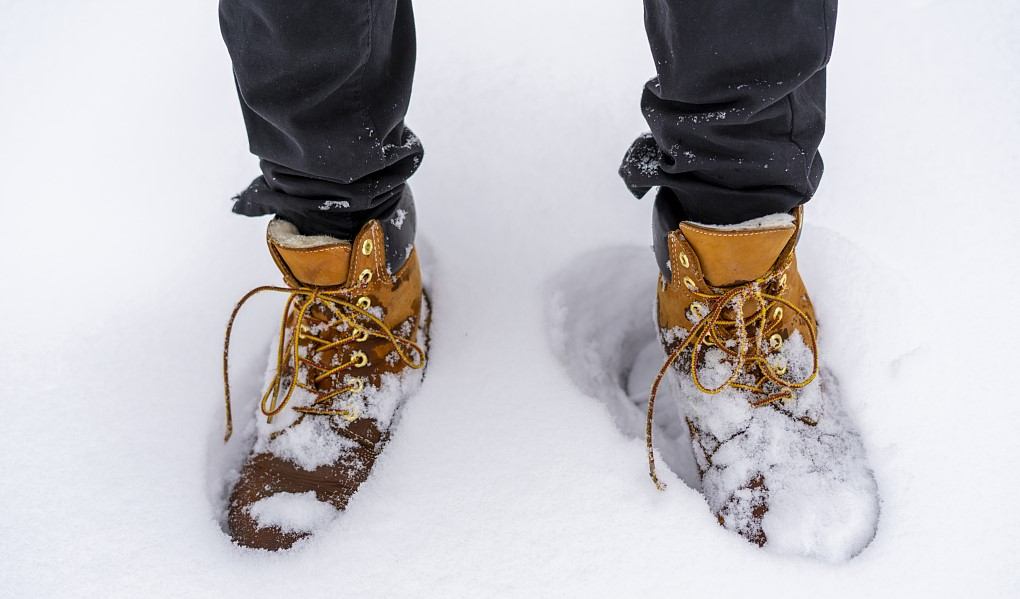Choosing the right footwear is crucial for outdoor activities during the winter season. One important consideration is whether to opt for non insulated boots or insulated boots.
In this comprehensive guide, we will explore the key differences between the two and provide you with the necessary information to make an informed decision based on your specific needs and preferences.
Non Insulated Boots vs. Insulated Boots
You may wonder what are non-insulated boots and what are the features of them. Actually, they are designed without any additional insulation material.
Non insulated boots are primarily meant for use in moderate weather conditions or situations where you prefer to have control over your foot temperature by layering socks accordingly.
On the other hand, insulated boots are specifically designed with added insulation material to provide warmth and protection in colder temperatures. They are ideal for winter activities or when you stay in extremely cold weather.
Boot Insulation Explained
Boot insulation refers to the thickness and weight of the material used within the boot construction.
The insulation material holds body heat and prevents cold air from penetrating the boot, thereby keeping your feet comfortable in chilly conditions.
There are different levels of insulation available in boots, measured in Grams, which determine the level of warmth they provide. Here are some common insulation levels on boots:
200g Insulated Boots
Boots with 200g insulation contain a moderate level of insulation material, which is suitable for cool to mildly cold temperatures. They provide a good balance between warmth and breathability.
Temperature Rating: These boots typically offer comfort in temperatures ranging from 20°F to 40°F (-7°C to 10°C).
400g Insulated Boots
Boots with 400g insulation provide a higher level of warmth compared to 200g boots. They are suitable for colder conditions and offer increased insulation.
Temperature Rating: These boots are designed to keep your feet warm in temperatures ranging from 0°F to 30°F (-17°C to -1°C).
800g Insulated Boots
Boots with 800g insulation offer a high level of warmth, making them suitable for extremely cold environments. They provide excellent insulation for prolonged exposure to freezing temperatures.
Temperature Rating: These boots provide comfort in temperatures ranging from -20°F to 10°F (-29°C to -12°C).
1200g Insulated Boots
With 1200g insulation, these boots offer maximum warmth and are ideal for frigid conditions. They are suitable for activities in extremely cold temperatures.
Temperature Rating: These boots are designed to keep your feet warm in temperatures as low as -40°F (-40°C).
Do You Need Insulated Boots for Winter?
Now, there is a key question: Do you really need insulated boots for winter? Well, it depends.
The decision to choose insulated boots for winter depends on various factors, including personal preference, weather conditions, and the specific activities you’ll be engaging in.
While insulated boots provide direct warmth, non-insulated boots offer versatility and the option to adjust your foot temperature by layering socks accordingly.
Interestingly, when searching the question on Google, there is a poll conducted on the hunting forum rokslide.com revealed that approximately 83% of respondents voted on the option ‘‘ non-insulated boots’’ for winter.
Some of them said that it would be enough to wear non-insulated boots paired with wool socks if the weather becomes cold.
While, others would opt for insulated boots only when toes start to feel uncomfortably cold or based on different areas and weather conditions in different states.
That is, it’s important to consider your specific needs, the anticipated weather conditions, and activities when deciding whether to choose insulated or non-insulated boots for winter.
How to Make Non Insulated Boots Warm?
If you prefer non insulated boots but still want to keep your feet warm during winter, here are some helpful tips that you can consider:
Wear High-Quality Socks: Choosing the right socks is crucial for keeping your feet warm in non-insulated boots. Wool socks are known for their natural warmth and ability to retain heat even when wet. Opt for wool socks or moisture-wicking thermal socks, as they provide excellent insulation and moisture management.
Use Foot Warmers: Utilize disposable or rechargeable boot warmers to provide extra heat inside your boots. These can be especially useful during prolonged periods in extremely cold conditions.
Insulated Insoles: Consider using insulated insoles to provide additional insulation and warmth. These can help retain heat and provide cushioning for added comfort.
Waterproofing Your Boots: Non-insulated boots are often not entirely waterproof, so you may get your feet wet when wearing boots for a long period. Wet feet can lead to discomfort and increased heat loss. In this case, you can apply a waterproof spray or treatment to your boots to keep your feet dry and prevent heat loss.
Utilize Gaiters: Gaiters are protective coverings worn over the lower legs and boots. They serve as a barrier against snow, water, and cold air, preventing them from entering your boots. By effectively sealing the opening between your boots and pants, gaiters help maintain a warmer and drier environment inside your non-insulated boots, enhancing overall insulation.
Warm-Up Before Going Outside: To prepare your feet for the cold day, try warming them up before going outdoors. You can warm both of your feet and boots by using hot water or a boot dryer. Additionally, performing some light exercises or foot movements to increase blood circulation can help promote warmth and reduce the risk of cold-related discomfort.
Conclusion
In conclusion, selecting the right boots for winter is essential for your comfort and protection. We hope that you have already understood the differences between non-insulation and insulation.
Non-insulated boots are suitable for moderate weather conditions. Insulated boots, with varying levels of insulation, provide direct warmth and are ideal for colder temperatures and freezing conditions.
When choosing winter boots, you can consider things such as temperature ratings, specific activities, and personal preferences and needs, then make your choice.





















Leave a reply